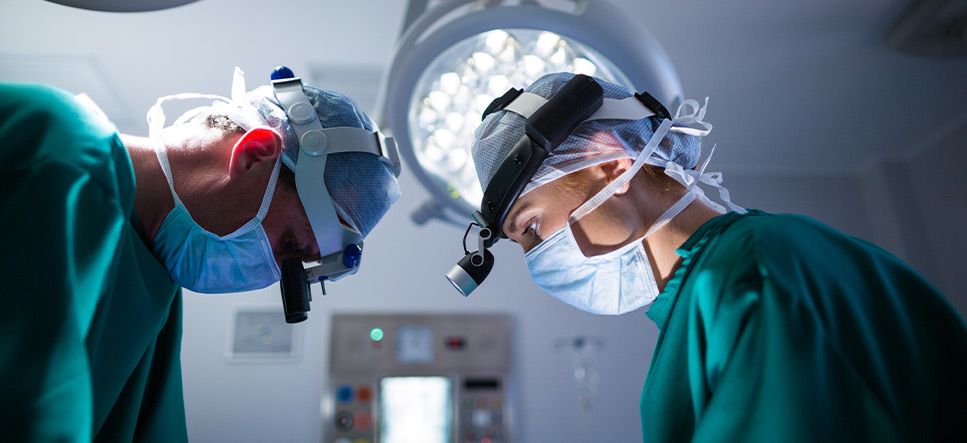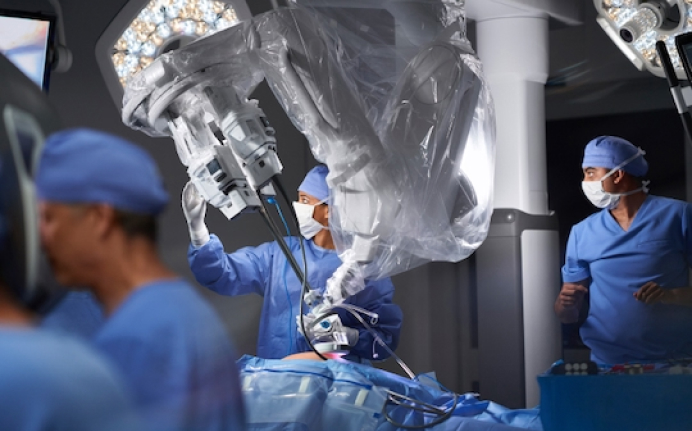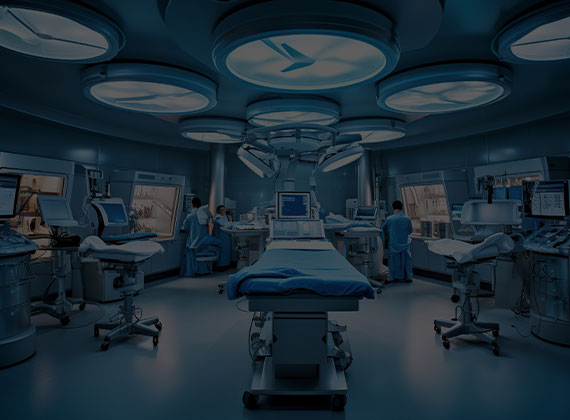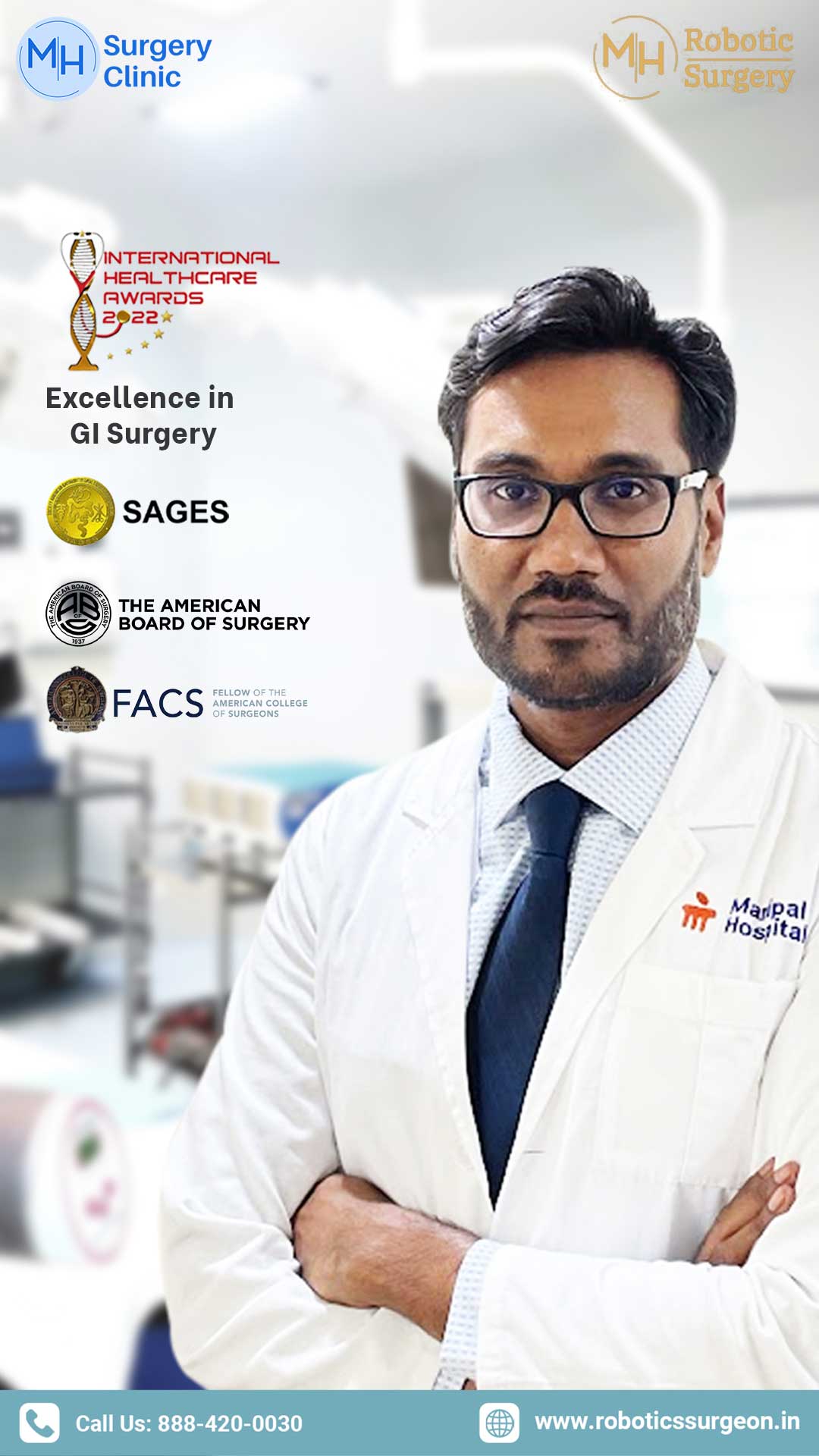
Robotic-Assisted Gallbladder Surgery
Minimizing Discomfort with Robotic Gallbladder Surgery
What to Expect During Robotic Gallbladder Surgery

Robotic gallbladder surgery also referred to as robotic cholecystectomy, changes the face of a surgeon’s approach to removing the organ. This is a minimally invasive procedure that is facilitated by advanced robotic technology in widening the surgeon’s precision and control in executing operations for several diseases related to the functioning of the gallbladder. With robotic surgery for gallbladder removal, the comfort of small scars, faster recovery time, and fewer complications are assured to the patient compared to the traditional methods applied.
Conditions Where Robotic Surgery Proves Advantageous:
Robotic gallbladder removal is especially useful in the following conditions, such as:
- Gallstones: These are hard deposits that often cause pain and inflammation. In such conditions, robotic cholecystectomy ensures the removal of gallstones with less tissue damage.
- Gallbladder Polyps: Abnormal growths that may turn cancerous are easily and safely removed through robot-assisted gallbladder surgery.
- Gallbladder Cancer: In case the patient is suffering from early-stage cancer, then surgery allows robotic surgeons to remove tumors cautiously, with dexterity and accuracy.
- Biliary Dyskinesia: Functional disorder of the gallbladder where robotic techniques enable the precise removal of the affected organ.
- Porcelain Gallbladder: Calcified gallbladder is safely removed by robotic surgery with reduced risks.
- Adenomyomatosis: Thickening of the wall of the gallbladder; therefore, by using a robotic approach for surgery, one could do the treatment more precisely.
- Cholecystoenteric Fistula: Abnormal communication between the gallbladder and intestines is effectively repaired by a robotic surgery procedure.
Advantages of Robotic Gallbladder Surgery
The advantages of robotic gallbladder removal include the fact that patients may have a faster recovery time since there is less pain and minimal scarring. In addition, with smaller incisions, patients going through a robotic surgery for gall bladder removal can be assured of less risk of complications and shorter stays in the hospital. This new approach provides superior control to surgeons to conduct intricate surgeries with better results.
Robot-assisted gallbladder surgery is a safe and very effective solution for many different gallbladder conditions, with several advantages compared to traditional surgical methods.
Read Also: Pancreatic Stones, Robotic Prostatectomy
We are making robotic surgery a new standard of care

Patient-Centered Care
Prioritize patient safety and well-being in the development and implementation of robotic care. Involve patients in the decision-making process, provide clear information, and address their concerns and preferences. Conduct rigorous clinical trials and studies.
Interdisciplinary Teams
A multidisciplinary team of experts, including clinicians, roboticists, engineers, data scientists, and healthcare administrators, to collaborate on this initiative. Encourage open communication and collaboration which leads to better patient outcomes.
Cost-Effectiveness
Assess the cost-effectiveness of robotic care and explore ways to make it more accessible to a broader range of patients. Collaborate with healthcare payers and providers to ensure reimbursement for robotic procedures.
Education and Training
Develop comprehensive training programs for healthcare providers, ensuring that they have the necessary skills and knowledge to use robotic systems effectively. Offer ongoing education and certification and update on the latest advancements.What to expect with robotic-assisted surgery
If you or someone you know is scheduled for robotic-assisted surgery, it’s natural to have questions about what to expect before, during, and after the procedure. Robotic surgery is a transformative medical technology that has revolutionized the field of surgery by enhancing the capabilities of surgeons and improving patient outcomes. Here’s an overview of what you can typically anticipate when undergoing robotic-assisted surgery:

Before the Surgery
Consultation: You will have one or more consultations with your surgeon to discuss your medical condition, the surgical procedure, whether robotic-assisted gallbladder surgery is the right option for you, and any alternatives if there are any.
Preoperative Evaluation: Before the surgery, you may need to undergo several tests and evaluations to ensure you are a suitable candidate. This may include blood tests, imaging scans, and a review of your medical history.
Preparation: Your robotic surgeon and healthcare team will provide specific instructions about how to prepare for the surgery. This may involve fasting for a certain period, discontinuing certain medications, and taking a shower with a special soap to reduce the risk of infection.
During the Surgery
Anesthesia: You will be given anesthesia to keep you pain-free and asleep during the surgery. The type of anesthesia (general or local) will depend on the specific procedure and your medical condition.
Operating Room Setup: In the operating room, the surgical team will position you on the operating table and prepare the surgical area. The robotic system will be set up, and your surgeon will be seated at the console.
Robotic Assistance: Your surgeon will control the robotic arms and instruments from the console. The robotic system provides enhanced precision and dexterity during the surgery.
After the Surgery
Recovery Room: After the surgery, you will be taken to a recovery area where you’ll gradually wake up from anesthesia. A nurse will monitor your condition closely.
Pain Management: You may experience some pain or discomfort after surgery. Your healthcare team will provide pain management medications as needed.
Hospital Stay: The length of your hospital stay will vary depending on the type of surgery and your individual recovery progress. Many robotic-assisted surgeries result in shorter hospital stays compared to traditional open surgery.
Why choose Robotic Surgery

Enhanced Vision
The robotic system delivers 3D high-definition views, giving your surgeon a crystal clear view of the surgical area that is magnified 10 times to what the human eye sees. This helps the surgeon perform surgery with greater accuracy and smoothness.

Precise movements
Robotic systems provide high precision and delicate motor control, lowering the possibility of human error. Surgeons utilize tiny devices that mimic human hands. Built-in tremor-filtration technology helps in smooth and precise movements.

Minimal Blood loss
Robotic surgery is minimally invasive, meaning it involves small incisions wiith minimal tissue damage resulting in less pain, and reduced scarring. Less blood means results in faster healing, less time in hospital and return to life sooner than expected.
FAQs
Robotic cholecystectomy results in more advantageous positions both in terms of size of the incisions and recovery time, and less pain to the patient as compared to open surgeries, and thus is a preferred method for patients.
You may need to fast, not take any medication or discontinue some of them before robotic surgery for gallbladder removal, and adhere strictly to your surgeon’s preoperative instructions for robot-assisted gallbladder surgery.
While the patient is in the hospital, following robotic gallbladder removal, a low-fat diet is advised for some days. You can go back to your normal diet but in a gradual manner and with changes depending on how your digestion will be.
In the management of post-robotic cholecystectomy, it is important to observe the wounds, attend follow-up appointments, and inform the surgeon of any pains or difficulties in digestion.
There are almost no side effects of robot-assisted gallbladder surgery and in the long run, the health of the patients is only enhanced. However, a small amount of alteration may be required based on the personal tolerance to the food consumed.


